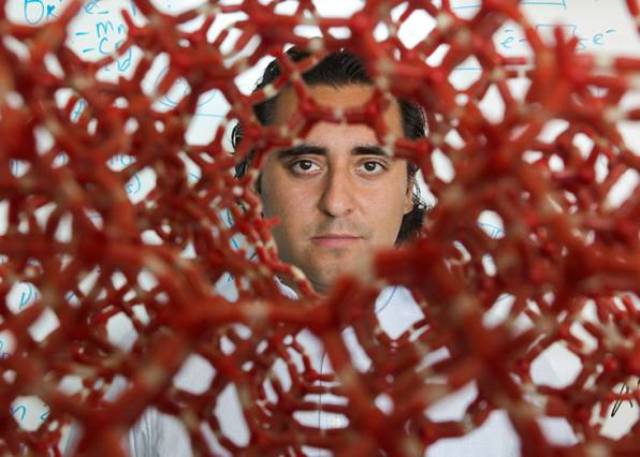 Yuriy Román. Photo: Len Rubenstein
Yuriy Román. Photo: Len Rubenstein
Yuriy Román, an Assistant Professor of Chemical Engineering at MIT, is leading a study on catalytic conversion of inedible plant matter into chemicals that could be used for producing fuels and useful substances. Catalysts stimulate and speed-up chemical reactions, and increase the possibility of applying the process on an industrial scale.
Until now, researchers have been endeavoring to develop low-cost catalysts that speed-up the reaction. Lower cost reduce the end cost of the product, while a more active material speeds up the chemical reaction.
Román states that efficiency and versatility also need to be considered when making new catalysts. Fossil fuels have been used as feedstock, and when plants need to be used as fuels new catalytic materials need to developed or existing materials need to be modified so that they can be used along with biomass. Catalysts designed for petrochemicals do not suit biomass as they are not efficient, effective or stable as specifically designed catalysts.
Román’s research group recently modified a traditional process that involved precious metals, high-pressure hydrogen gas and multiple steps for converting plant matter into gvalerolactone. This chemical is widely used for producing polymers and fuels. The modified process does not require precious metals or high-pressure hydrogen gas and can take place in a single step. The researchers fit very minute amounts of an acid into the very small pores in a porous material, and this avoided the requirement for hydrogen gas.
Biomass processing involves water which affects acid. The MIT research team modified the pores so that they became water repellent. This allows Lewis acid-based chemistry to be performed, and various new chemicals could be made from biomass-derived feeds.
Previously, Román had conducted research on mesoporous and microporous materials at Caltech Professor Mark Davis’ laboratory. Román understood that new catalysts could be developed only by crossing the materials science-chemical engineering boundary. Further, skills from various fields including materials design, computational modeling, and spectroscopy are required for advanced catalysis research.
Boundaries between the different fields are really fading, and I think this is something that’s really important to embrace.
Yuriy Román, Assistant Professor of Chemical Engineering at MIT
References